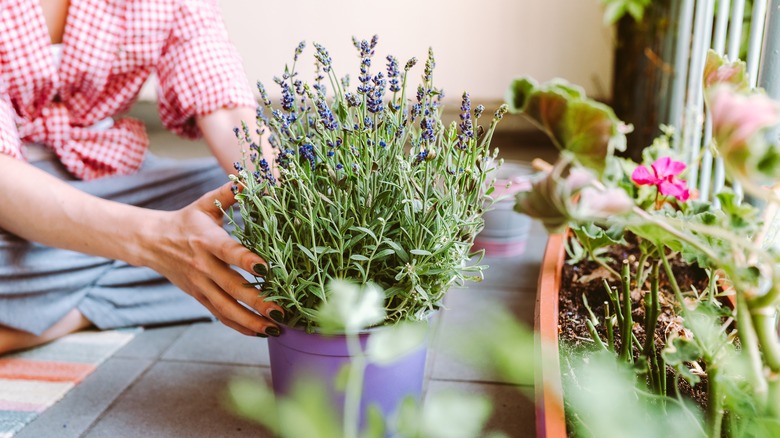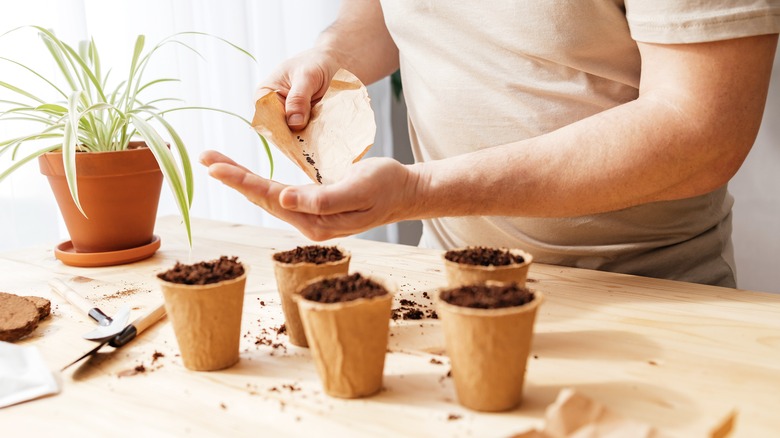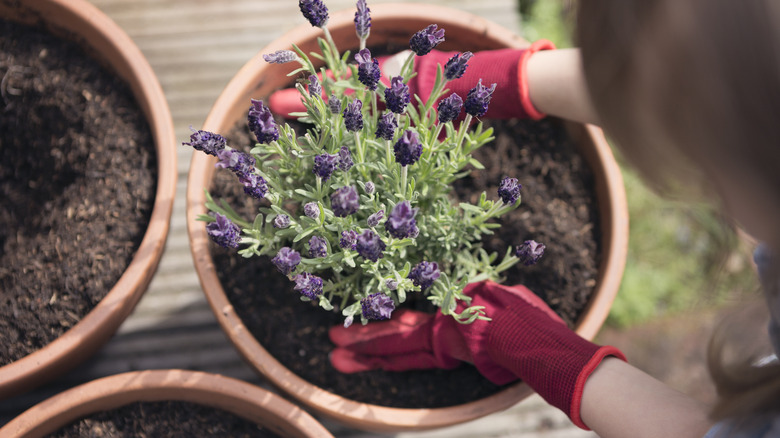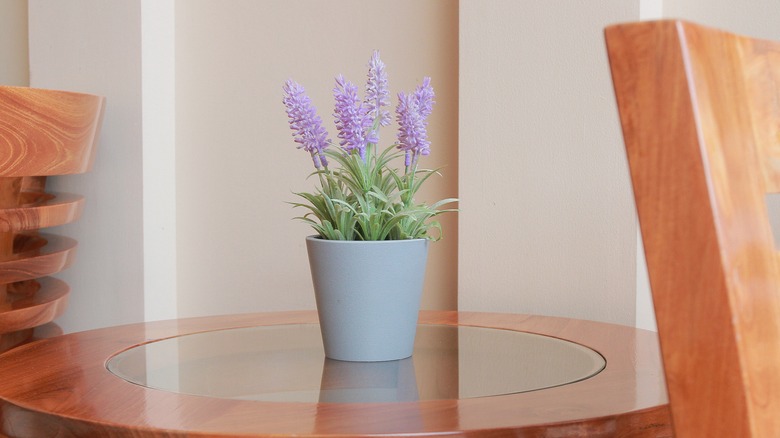Grow A Healthy Lavender Houseplant With These Simple Tips
Lavender is one of those perennials that will never leave your garden. While it is generally a fuss-free plant that is great for gardening beginners, growing lavender indoors can be a bit challenging. Lavender naturally thrives in the open fields of sunny, dry climates. It prefers full sunlight, well-draining soil, and plenty of air circulation — conditions that can be difficult to replicate and maintain indoors. Additionally, the plant's size and tendency to become leggy can be problematic in indoor environments.
Even so, many homeowners want to grow lavender indoors to enjoy its beautiful fragrance and therapeutic benefits. A medicinal plant known to reduce stress and promote better sleep, it is easy to see why folks want to add this plant to their indoor spaces. Moreover, lavender's aesthetic appeal, with its beautiful purple blooms and silver-green foliage can brighten up any room, adding a touch of elegance and nature to your home decor.
Growing lavender indoors can be highly rewarding. It can be a focal point in your indoor plant garden or a charming addition to your bedroom interior. But given the challenges, it can be daunting to grow a healthy lavender houseplant. Follow these simple tips to ensure your lavender houseplant thrives and brings you joy throughout the year.
Make the right starting choices
If you intend to grow a lavender houseplant, it's important to remember that not all varieties of his herb are suited for indoor growth. Of the 450 lavender varieties, dwarf varieties fare the best indoors. These include English lavender (Lavandula angustifolia) or French lavender (Lavandula dentata). These species are more compact, making them easier to manage and less likely to outgrow their space, making them better adapted to indoor conditions.
It is possible to grow lavender from seeds, but these seeds are notoriously difficult to germinate. According to BHG, you're better off starting with a young, healthy transplant from a reputable store or nursery. Since they have bypassed the delicate seedling stage, you will have a higher chance of success at growing a mature lavender plant.
Alternatively, if you have access to a mature lavender plant of the dwarf variety in your outdoor garden, you can try this clever propagation technique to help your lavender thrive. This method involves taking a cutting from a healthy plant and rooting it in soil or water. This can be a cost-effective way to expand your lavender collection indoors.
How to pot your lavender houseplant
Potting is an important part of the growing process. When potting your lavender, choose a container with good drainage to prevent water from sitting at the bottom. Keeping in mind that lavender flourishes in open spaces, use a pot that is bigger than your rootball to allow for growth and expansion. Remember that lavender prefers dry climates, so overwatering can stunt the growth of this plant. Terracotta pots with drainage holes are an excellent choice because they are porous, facilitate water escape, and allow the soil to dry out fully between water.
When it comes to soil, lavender thrives in well-draining soil. Use a mix designed for succulents or create your own by combining regular potting soil with sand and perlite. This type of soil mimics the plant's natural habitat and helps prevent waterlogging.
Lavender does not require heavy fertilization. A balanced, water-soluble fertilizer once a month during the spring and summer, when it grows, is often sufficient. In fact, over-fertilizing can lead to excessive foliage growth which will reduce the plant's flowering potential.
How to nurture your lavender houseplant for
According to Flora Sense, lavender prefers cooler temperatures, ideally between 60-85 Fahrenheit, so avoid placing your plant near heating vents. Lavender also thrives in dry conditions, so keep it away from areas that tend to become and stay humid, or from any humidifiers. Too much humidity can promote fungal diseases on this otherwise hardy plant.
Lavender requires an immense amount of sunlight to thrive. Actually, a lack of adequate light is one of the most common reasons indoor lavender plants fail to thrive. Place your plant in a window where it can receive at least 6-8 hours of direct sunlight easily. If natural sunlight is insufficient, consider using a grow light to supplement. When keeping your plant next to a window, however, make sure it is not exposed to sudden changes in wind or cold drafts, as this can stress the plant.
Lastly, since lavender is drought-tolerant and prefers to be on the drier side, you should let your soil dry out completely between waterings. Regular pruning will also help encourage new growth and maintain the shape of your lavender plant. Continue to do so to prevent the plant from becoming leggy as well as encourage more flower growth. This will keep your lavender houseplant bushy and healthy.



